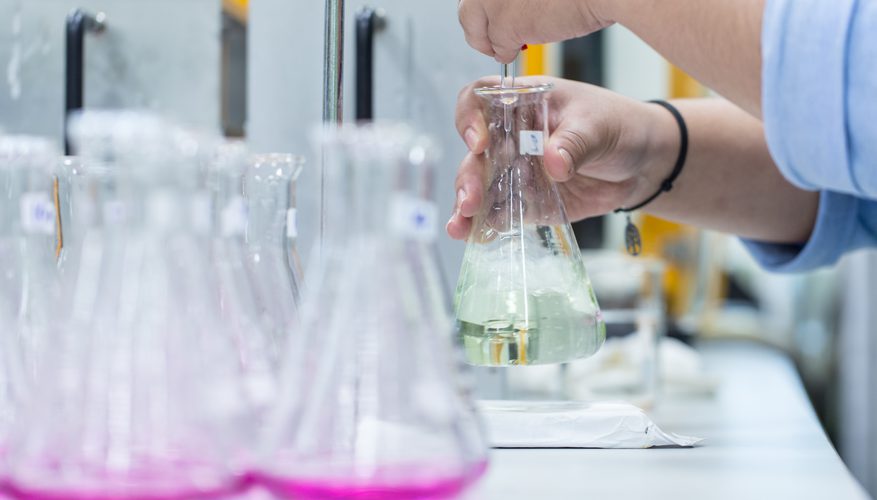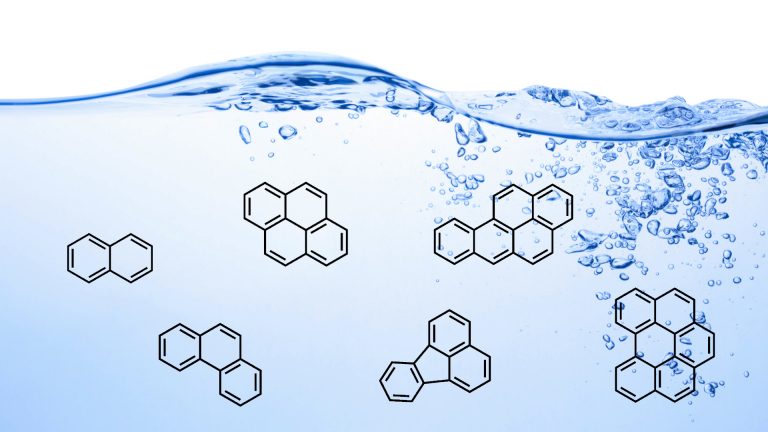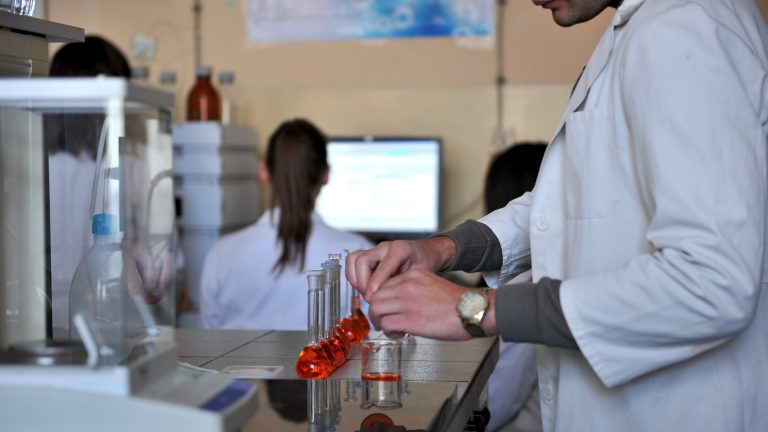Analytical methods based on volume measuring are named titrimetric or volumetric methods. In titrimetric analyses, we add a reagent of exactly known concentration to a solution of analyzed compound until they completely react – a process called titration. They are highly accurate and precise, rapid and nowadays automated.
Titrimetric methods are one of the oldest, but still widely used in almost all laboratories worldwide in research and industry as well. If you want a rapid determination of soil organic matter or vitamin C in commonly consumed food, you will certainly use titration. In order to do this, you will need a burette – a graduated glass tube with a tap at one end. The first burette was prepared by French chemist Étienne Ossian Henry in 1845 but later was modified by German chemist Karl Friedrich Mohr.
Titrimetric methods can be divided based on the type of reaction used into four groups:
- Acid-base titration
- Precipitation titration
- Redox titration
- Complexometric titration
If one reaction could be used in titrimetry it should meet certain criteria:
- The reaction must be quantitative, with a high equilibrium constant.
- The reaction must be rapid. If the reaction is slow, the time of determination is extended, possibly leading to an inaccurate determination.
- The reaction must have known reaction stoichiometry, in order to calculate the amount of analyte present.
- There must be some method for observing the endpoint of the reaction.
You must use a standard solution in order to perform a titration. A standard solution is a solution that contains a known concentration of a substance. The accuracy of standard solution preparation greatly affects volumetric determination accuracy. Standard solutions can be divided into two categories:
- Primary standard solution – obtained by diluting the desired amount of the substance in an appropriate solvent.
- Secondary standard solution – obtained by diluting the substance to approximate concentration, and then determine its concentration by titration in a process called standardization.
A primary standard solution can be prepared of stable, pure, non-hygroscopic and accessible substance. If one of these requirements is not fulfilled, a secondary standard must be prepared. In practice, only a few substances meet all of these requirements.
The concentration of the standard solution may change through time, so it must be re-determined from time to time. Also, a solution prepared by diluting standard solution must be standardized again.





This website was… how do I say it? Relevant!! Finally I’ve found something which helped me. Many thanks!
Very good info. Lucky me I ran across your site by accident (stumbleupon). I’ve book marked it for later!
Somebody essentially help to make seriously articles I would state. This is the very first time I frequented your web page and thus far? I surprised with the research you made to create this particular publish incredible. Wonderful job!